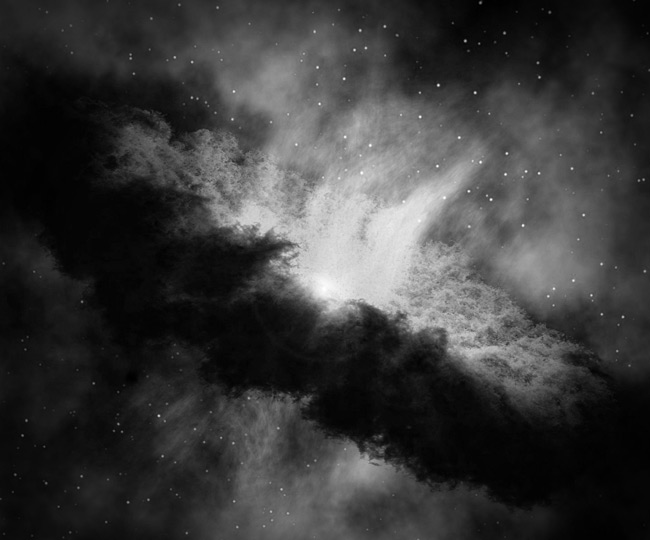Navigating the Observatory
Main Level:
- Wilder Hall of the Eye
- Ahmanson Hall of the Sky
- Foucalt Pendulum
- Hugo Ballin Mural
Lower Level:
- Edge of Space
- Gunther Depths of Space
- The Cosmic Connection
- Cafe at the Edge of the Unvierse
Sparking imagination and inquiry through exposure to the awe and wonder inherent in astronomy is the goal of the new Griffith Observatory exhibit program.
Main Level:
Lower Level:

The Wilder Hall of the Eye illustrates the nature and progress of human observation of the sky and the tools used for that exploration. This exhibit gallery focuses on how people have observed the sky and the often profound impact those observations have had on people and society. Each of the four Wilder Hall of the Eye exhibit areas charts the key developments that have further evolved our ability to help our eyes see farther, fainter, and beyond.
Imagine a world without day or night, with no change of seasons or annual cycles. It wouldn't be Earth, because the Sun and Moon dominate our sky and measure the march of time. Sunrise, sunset, and the passing of years and seasons--as well as the restless tides, monthly Moon phases, and awe-inspring eclipses--occur because the Earth and Moon move in relation to the Sun and each other.
The gently swaying Foucault Pendulum in the W.M. Keck Foundation Central Rotunda has long been a visitor favorite since the building opened in 1935. One of the largest such devices in the world, the fully restored pendulum is actually an elegant scientific instrument which demonstrates the Earth's rotation.
The 240-pound bronze ball, suspended by a cable 40 feet long, swings in a constant direction while the Earth turns beneath it. The pendulum is mounted to a bearing in the rotunda ceiling that does not turn with the building as it rotates with the Earth. A ring magnet at the bearing gives a little tug on each swing of the pendulum to keep the pendulum in motion. As the day passes, the pendulum knocks over pegs set up in the pendulum pit and indicates the progress of rotation.
Medieval cathedrals told stories in stone. The Ballin ceiling mural celebrates classical celestial mythology, with images of Atlas, the four winds, the planets as gods, and the twelve constellations of the zodiac. The eight rectangular Ballin wall murals depict the "Advancement of Science" with panels on astronomy, aeronautics, navigation, civil engineering, metallurgy and electricity, time, geology and biology, and mathematics and physics.
Artist Hugo Ballin celebrated the progress of science through his spectacular art. These eight panels represent what he called the “Advancement of Science from Remote Periods to Present Times.” Each one shows how science and engineering changed throughout history up to the time Griffith Observatory opened to the public in 1935. The fields shown are aeronautics, navigation, civil engineering, metallurgy and electricity, time, geology and biology, mathematics and physics, and astronomy.
The Edge of Space occupies the mezzanine area in the new Richard and Lois Gunther Depths of Space exhibit gallery. It provides visitors with an experience that bridges the more familiar Earth-bound orientation toward the universe with a more cosmic perspective informed by the most sophisticated astronomical instruments ever built. The zone showcases samples of the universe that come to Earth from space or that we acquire through space exploration.
Space exploration transformed our understanding of the cosmos and our place in it. As we learned more about the sky, our horizons broadened. What we once could detect only with our eyes, we now explore with technology.
Today our telescopes and space probes reveal landscapes on other worlds and detect planets around other stars. Our observing tools have extended our vision out to the stars, to the earliest galaxies, and back to nearly the beginning of time. Now, we can clearly see our place in the universe. We can feel at home in the cosmos.
Unimaginably vast and continuously changing, the universe has been growing larger for nearly 14 billion years. We are connected to the origin of the universe by the sparkling ribbon of time that reaches from the Big Bang to today, when we observe what the universe is, understand what it is doing, and appreciate how long all of this has been going on.
Nearly 2,200 pieces of celestial jewelry form the ribbon of time. Longtime Friends Of The Observatory board member Kara Knack collected them over nearly 25 years and generously contributed them to form the timeline. The cosmic shapes and designs of the pieces symbolize astronomical objects and our connection with them.
Located on the observatory's lower level between the Gunther Depths of Space exhibit hall and the Gottlieb Transit Corridor, the Café at the End of the Universe is the perfect place for a leisurely meal or a quick bite.
Seating is available inside the café or outdoors on the Sunset Terrace with views of the City and the Hollywood Sign.
Tue - Fri | Noon - 9p
Sat - Sun | 10a - 9p
